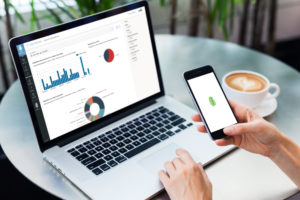Want to receive more articles like this ?

While the concept of a Smart City might sometimes be a bit vague, it is clearly founded upon the idea of exploiting data to run and manage the urban environment in a more sustainable manner. It is a powerful tool that can be used to make public policies much more effective and fuel new urban initiatives, but only if it is collected, leveraged and protected in the right way.
Urban data is priceless
With urban populations constantly on the rise, city governments are looking for new ways to improve the standard of living for their citizens. But how do you build a Smart City? What resources do local authorities possess that could be used to efficiently solve such wide-ranging issues as the environment, budget cuts and road traffic? The answer is simple: data. Leveraging urban data is the best way to intelligently manage a city. Using big data to inform public initiatives paves the way to building agile solutions to complex issues, minimising the use of resources while maximising quality of life. However, the digital transformation path is full of potholes waiting to trip up any unwary travellers on their way to creating a mature Smart City. The process involves adopting new tools that turn existing processes on their head, redefining the relationship with concession holders on the question of data governance.
Breaking down data storage and processing silos
Every city is crisscrossed by a complex maze of underground and overground networks: water, gas, electricity, sewage, roads… And with this labyrinth comes a giant stream of data that floods the urban environment from a wide variety of sources. Service providers produce huge amounts of data as part of their public service concessions, collecting information in the process of managing water, electricity and waste, for example. But they aren’t the only ones: local authorities do so too (e.g. budget data), as do private companies such as Uber and Waze, and even citizens themselves (it’s how GAFA made their riches). This treasure trove has led some to say that data is the black gold of the 21st century, an endless source of wealth. But the hard part is mining! And this is often when city governments come face to face with the limits of a closed-off environment between departments, or of relationships with service providers and concession holders where the question of data has not been sufficiently formalised. The notion of sharing data has not been part of the traditional modus operandi, with each party usually processing and storing data separately. A Smart City strategy flips this and attempts to break down data silos. Data is best exploited when it is seen as a stream and not as a stock. Central management of data will make it possible to correlate information and perform deeper analyses. Consolidating urban data from utility networks or on citizen behaviour provides actionable insights that can be used to optimise a city’s facilities and infrastructure.
Concrete applications with a data platform
It’s fairly common for the various parties that make up a city’s ecosystem to not only work in silos, but also to not have IT systems capable of communicating with each other. Converging these information streams into one single digital platform therefore solves both the problem of how to correlate data and how to share it with all of the stakeholders. And it also makes it infinitely easier to identify areas for improvement. For example, a city could compare the temperature and energy consumption of its facilities to spot poorly insulated buildings and take the appropriate action. Or it could go down the smart grid route by adapting public lighting based on natural sunlight to create a safer environment while lowering its electricity bill. Or it could monitor car parking and inform motorists of free spaces via an app. The possibilities are endless !
The delicate question of data sovereignty
There is no shortage of urban data and its free movement is an integral part of any Smart City project. But who does all this data belong to? For a long time, concession holders believed that the data they produced and processed was their property, since they were the ones who took responsibility for it in front of data protection authorities. But the 2016 French Digital Law redefined them as the city’s sub-contractors, meaning the local government would have full control of the data produced through such concessions. However, each time the concession changes hands, there’s the question of how to archive the data generated by the predecessor, which threatens the city’s effective data sovereignty. Data platforms are also a defence against this type of situation: by assembling and archiving data from concession holders, it avoids any loss of historical data from becoming an issue. The other problem when it comes to data management for cities is data protection, especially in regard to GDPR compliance. Using a data platform especially designed to comply with current regulations adds another layer of security, allowing them to focus on getting the most out of their Smart City project.



